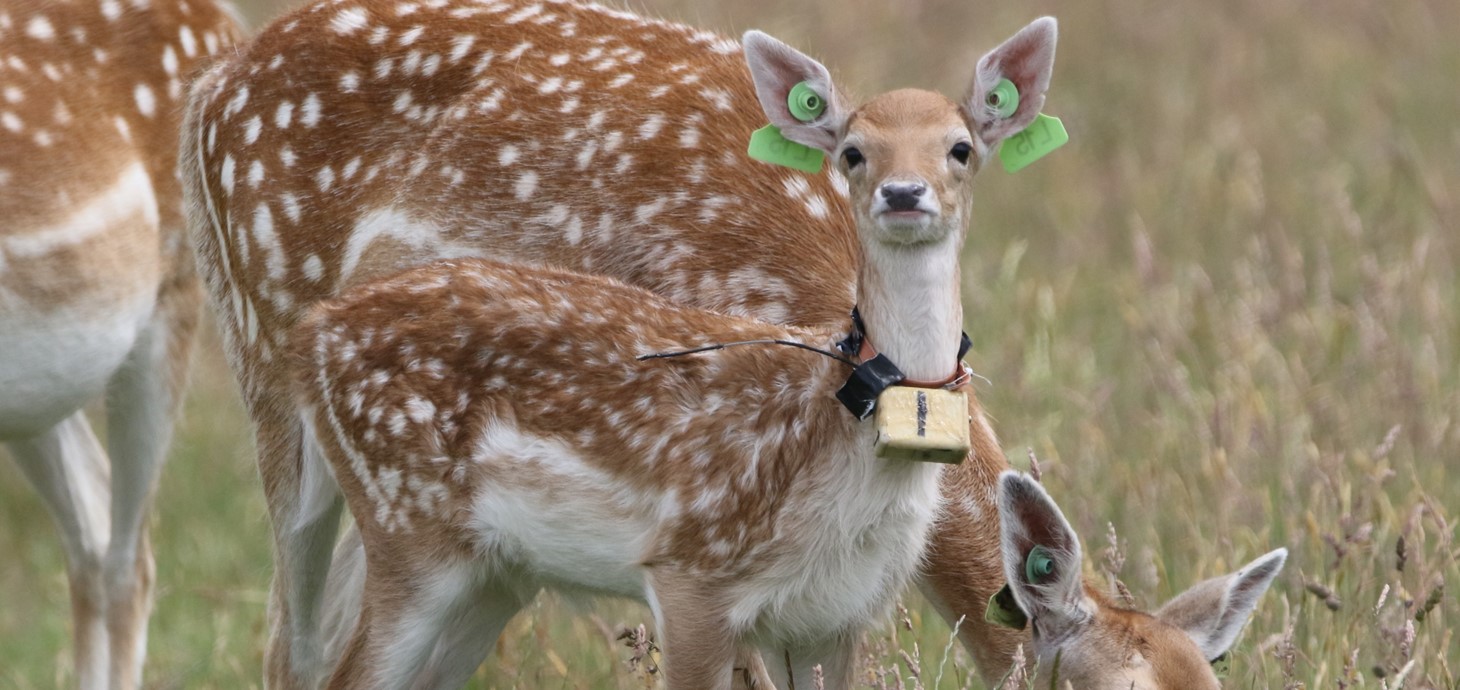
Researchers recorded the sleeping behaviour of free-ranging fallow deer fawns during the first five weeks of life, using minimally-invasive biologging technology. Picture credit: Connie Baker-Horne
New research has revealed that newborn fallow deer fawns differ both in sleeping patterns and the rate of development from birth on an individual basis, as we see in newborn human babies, in the first study of its kind by Queen’s University Belfast.
The researchers recorded the sleeping behaviour of free-ranging fallow deer fawns during the first five weeks of life at Phoenix Park in Dublin. They used minimally-invasive biologging technology, developed by WildBytes and the Swansea Laboratory of Animal Movement at Swansea University, to track the animals while they remained hidden in the woods and vegetation, and isolated from their mothers and wider herd.
Good sleep is essential for health in humans and other animals, playing a fundamental role in development. This study shows the marked and consistent individual differences among deer in sleep quantity, quality and fragmentation, as well as the rate sleep develops – in the first week of life, the shortest sleeping fawn slept about half the time of the longest sleeping fawn.
The study, led by Queen’s University Belfast in collaboration with researchers at Swansea University, and supported by University College Dublin, has been published in Animal Behaviour. It was supported through a Department for the Economy PhD studentship via Queen’s and the Association for the Study of Animal Behaviour (ASAB).
Commenting on the findings, Dr Isabella Capellini, Reader at Queen’s University Belfast said: “This is the first study of its kind which has looked at the sleeping habits of newborn species in the wild and has shown fallow deer fawns' sleep rapidly decreases and consolidates in the first five weeks of life.
“Our results suggest that differences between fawns may have important implications for the fawns' future health and might reflect pace-of-life syndromes, that is how individuals invest in growth, reproduction and health over their lifetime.”
The research also looked at the conditions affecting the sleeping behaviour of fawns and found sleep time was reduced and was of lower quality on warmer days and further compromised in more humid conditions, but was higher on days with greater rainfall.
Adding to Dr Capellini’s comments, Professor Luca Börger from Swansea University said: “Understanding the ecology of sleep of wild animals is a fascinating and crucially important topic, but we virtually do not know anything about it, due to the difficulties in recording sleep non-invasively in free-living animals. We show how animal-borne accelerometers (sensors similar to those used in Fitbits and mobile phones), if coupled with dedicated software methods to analyse the data, allow us to investigate sleep in the wild for the first time.”
